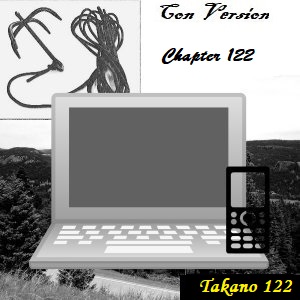
Patreon or PayPal Me keeps this site and its author alive. Thank you. |
Stories from the Verse
Con Version
Chapter 122: Takano 122
Table of Contents
Previous chapter: Cooper 39

The next day Tommy changed to the blue skirt and again caught the early cab with Brian.
“I don’t know whether we need to be quite this early,” she said. Brian sort of shrugged.
“The later we leave,” he said, “the worse the traffic will be. But I suppose we could do eight-fifteen tomorrow.”
Again they were there before the section was unlocked, and again the boss arrived about ten minutes after they did. Tommy immediately started the coffeepot--it was an old-style perk pot, but she had been shown how to use it. Maybe ten minutes later when the coffee was ready she took a cup to Mister Granville, and found her desk to wait while others were arriving.
Half an hour later, as people were settling into their work, she made the rounds delivering coffee. She had by now worked out who was working on what, so she put the three men exploring electronic information processing last. As she delivered the coffee and they somewhat absently thanked her, she spoke up.
“I’m not sure how far along you are,” she said, “but have you considered coprocessing?”
With confused looks, one of them asked, “What is that?”
Maybe she was too far ahead.
“You place two or more processors next to each other, and set up a system that divides the calculations into pieces, giving the pieces to the various processors and then putting them back together. It’s a simple way to increase processing power, but even more, processing speed.”
The man who asked was staring with his mouth open. One of the others said, “Why hasn’t anyone thought of this before?”
“Do we know they haven’t?” the third asked. The first managed to compose himself.
“Where did you get this idea--I’m sorry, I’ve forgotten your name.”
“That’s all right. I’m Tomiko Takano, but everyone calls me Tommy.”
“So, where did you get this idea?”
“I’m not sure. My family is Japanese; my grandparents emigrated from Japan, and my father was an engineer. So I grew up with electronics and related technology.”
“This could work,” the second said.
“Of course, we have to get the bugs out of one processor before we think about trying to gang them.”
Brian came over.
“Hi, Uncle Brian, can I get you some coffee?”
“Thanks, Tommy; I got some in the cafeteria. So, gentlemen, I’ve been assigned to help you develop a calculating machine. Where are we in this?”
“Tommy here has just suggested something truly innovative. She called it--what did she call it?”
“Coprocessing,” Tommy said.
“Oh, yes,” Brian responded. “Ganging two or more processing circuits to work together, each tackling part of a larger problem. An excellent idea, but I think we have to get one processor debugged before we can consider it.”
“Yes, we were just saying that.”
“Join us, Tommy?” Brian said as he pulled over a fifth chair to join the four that were there.
“I’ve given some thought,” he continued, “about how we can get ahead in this game. Right now there are people working on integrated circuits, and by the end of the decade it will be possible to design and make them in mass production. What we want to do is have a design ready when the technology catches up to it.”
“So, how do we do that?”
“Integrated circuits are going to be made by using semiconductors like silicon and carving circuits into them with lasers. It will become possible to put dozens of transistors in interconnected circuits onto a square about a quarter of an inch, and put it in a plastic housing that plugs into a socket on a larger circuit board. Thus we need to design working processors and memory circuits that rely almost entirely on interconnected transistors. With the current technology, those circuits will be huge, hot, and expensive to run--but if we can debug them in that form, we can have the circuit designs ready to execute as chips when the companies are ready for them.”
“What’s a laser?” the second man asked. Cooper gave a quick answer.
“I think it stands for light amplification through stimulated emission of radiation, or something like that. It’s something Einstein predicted, and people are working on making it a reality right now. For our purposes, it’s a microscopic cutting tool.”
“And what will we do with these chips?” the third man asked. Tommy answered.
“The Russians are working on putting a man in space,” she said.
“Oh, that will never work,” the second man responded.
“Actually, there are good reasons to think it will--and when it does, the President is going to have to respond by starting an American space program. That will require calculating machines beyond anything now available, and the government will wind up spending a lot of money not only to buy those machines, but to help the companies that make them make better ones.”
“That, gentlemen,” Brian said, “is the wave we want to ride.”
“So then, the first step is to create a giant transistorized calculator,” the lead man said, “so that we have the circuit designs we need when the opportunity to miniaturize them comes.”
Brian and Tommy only nodded. They had put the company on a potentially successful line, and had at the same time proved their worth to the department. It was working.
There is a behind-the-writings look at the thoughts, influences, and ideas of this chapter, along with eleven other sequential chapters of this novel, in mark Joseph "young" web log entry #512: Versers Work. Given a moment, this link should take you directly to the section relevant to this chapter. It may contain spoilers of upcoming chapters.
As to the old stories that have long been here:

